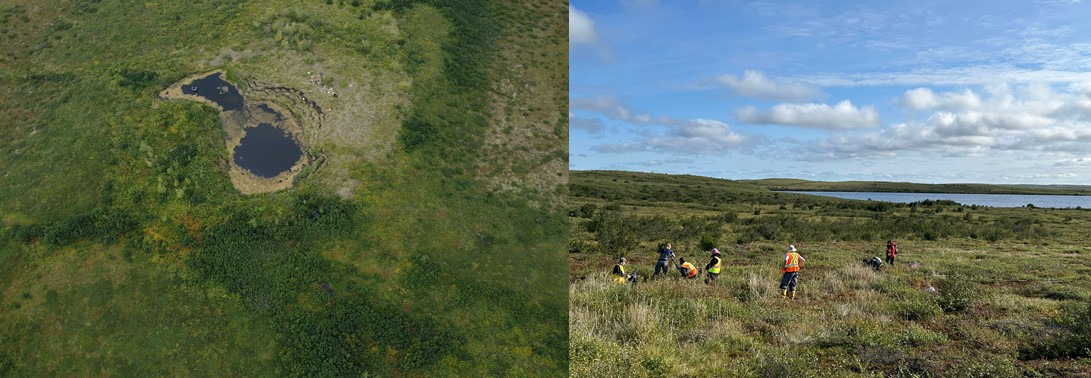
Intensive oil and gas exploration during the 1970s to the 1990s has significantly impacted the Mackenzie Delta region of Canada’s Northwest Territories, a region characterized by a high density of freshwater ecosystems. These industrial activities led to the establishment of over 230 drilling mud sumps (excavated pits used for the disposal of drilling waste), which may become destabilized as the permafrost thaws, potentially releasing contaminated industrial waste into adjacent aquatic ecosystems.
This project is a subproject of the larger ThinIce initiative, a multidisciplinary effort led by the Alfred Wegener Institute, aiming to enhance the understanding of the stability of drilling mud sumps in the Mackenzie Delta region. The overarching goal of our subproject is to establish a timeline of ecological shifts since the construction of the drilling mud sumps to assess whether contaminants have become mobilized and are impacting sensitive nearby aquatic ecosystems. We will utilize bioindicators and biomarkers in sediments to determine changes in water quality and biodiversity to ultimately reconstruct changes over the last 100 years. Furthermore, we will characterize the current biogeochemical conditions of ponds that have developed directly on or at the perimeter of drilling mud sumps, an area that has yet to be investigated.
By determining the regional extent of environmental changes, we aim to provide insights into the condition of thermokarst waters, the current degree of pollution, and the resilience and adaptability of these ecosystems. These insights will inform the development of protective measures in collaboration with our local partners to mitigate the negative effects of industrial legacy pollution, which will be further exacerbated by climate change.